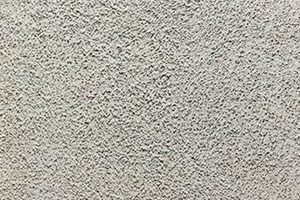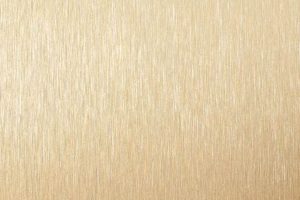Devices designed for the precise application and smoothing of joint compound on gypsum board are essential for achieving a seamless wall or ceiling surface. These implements range from specialized knives used to spread the compound, to pans and hawks that hold the material, and sanding tools required for final surface preparation. Selection depends on project scale, desired finish quality, and user experience.
The availability of reliable methods for creating a flat, uniform surface offers several advantages, including enhanced aesthetics, improved paint adhesion, and increased durability of the finished wall. Historically, achieving such results required considerable skill and time; however, advancements in implement design and material technology have significantly streamlined the process, enabling more efficient and consistent outcomes.
The subsequent sections will explore specific types of applicators, smoothing instruments, and abrasives, detailing their uses, advantages, and proper maintenance to ensure optimal performance in gypsum board finishing projects.
Essential Guidance for Optimal Gypsum Board Seam Treatment
Achieving a professional finish when preparing gypsum board for painting or texturing requires attention to detail and the application of best practices. The following guidelines will contribute to superior results and minimize common errors.
Tip 1: Maintain Cleanliness: Ensure implements are free from dried compound before each use. Residue buildup can create imperfections in the finish and shorten the lifespan of the tool.
Tip 2: Apply Compound Sparingly: Multiple thin coats of joint compound are preferable to a single thick layer. This minimizes shrinkage, cracking, and the need for extensive sanding.
Tip 3: Utilize Appropriate Blade Flex: Select a taping knife with the appropriate flexibility for the task. A stiffer blade is suitable for embedding tape, while a more flexible blade is better for feathering edges.
Tip 4: Employ a Mud Pan or Hawk Efficiently: Load the knife with compound from the pan or hawk at a consistent angle. This ensures even distribution and minimizes waste.
Tip 5: Sand with Proper Grit: Begin sanding with a coarser grit sandpaper (e.g., 120 grit) to remove imperfections, followed by a finer grit (e.g., 220 grit) for a smooth finish.
Tip 6: Control Dust During Sanding: Employ a vacuum sander or wet sponge to minimize dust accumulation and improve visibility of the surface being sanded.
Tip 7: Inspect Under Proper Lighting: Use a bright light source to inspect the finished surface for imperfections before priming and painting.
Adhering to these recommendations enhances the quality of the finished surface, reduces the likelihood of rework, and contributes to a more professional outcome. Proper selection and utilization of these tools ensures longevity of finish and ease of future paint applications.
The concluding segment will address appropriate storage and maintenance procedures to maximize the lifespan and effectiveness of these implements.
1. Blade Flexibility
Blade flexibility, a critical attribute of gypsum board finishing knives, directly impacts the quality and efficiency of joint compound application. The appropriate degree of flex allows for precise control and smooth transitions, influencing the final appearance of the wall or ceiling surface.
- Initial Tape Embedding
Knives with minimal flex are best suited for embedding joint tape. The stiffness allows for uniform pressure across the tape, ensuring proper adhesion and preventing air pockets. Insufficient pressure during this phase can lead to bubbling and cracking, requiring subsequent repairs.
- Feathering Compound Edges
Greater blade flexibility facilitates the feathering of compound edges. A flexible blade conforms more readily to the existing surface, creating a gradual transition between the compound and the gypsum board. This minimizes visible ridges and sanding requirements.
- Application on Curved Surfaces
Highly flexible blades are advantageous when working on curved or irregular surfaces. The blade’s ability to bend and conform allows for consistent compound application, preventing gaps and ensuring a smooth finish on complex architectural features.
- Minimizing Sanding Effort
Optimal blade flexibility reduces the amount of sanding required. By enabling smooth, even compound application, the need for aggressive sanding to correct imperfections is diminished, saving time and reducing dust exposure.
The selection of knives with appropriate blade flexibility is crucial for achieving a professional gypsum board finish. Varying degrees of flexibility are necessary for different stages of the process, from initial tape embedding to final feathering, and contribute significantly to the overall efficiency and quality of the work.
2. Compound Consistency
The workability and ultimate success of gypsum board finishing are inextricably linked to the consistency of the joint compound. Inappropriate compound viscosity directly impacts the performance of various implements and the overall quality of the finished surface. The relationship is causal: deviations from ideal consistency necessitate adjustments in technique or necessitate the use of specific implements, ultimately affecting efficiency and final results.
For instance, overly thick compound requires greater force to spread, straining both the applicator and potentially damaging the gypsum board paper. This situation favors the use of wider, more rigid knives to distribute the material, albeit at the expense of feathering precision. Conversely, excessively thin compound lacks the necessary body to fill voids effectively, leading to sagging and requiring multiple applications. This may necessitate specialized pumps or application systems designed to handle low-viscosity materials, incurring additional expense and complexity.
Achieving optimal compound consistency is, therefore, a prerequisite for effective gypsum board finishing. Precise mixing, proper storage to prevent drying or separation, and understanding the influence of environmental factors (temperature, humidity) are all essential. Correct preparation of the compound minimizes challenges during application, enhances the lifespan of the implements, and ultimately contributes to a superior, more durable finished surface. Failure to address consistency issues introduces inefficiencies and compromises the integrity of the final product.
3. Surface Preparation
Effective surface preparation is a non-negotiable prerequisite for achieving a high-quality finish on gypsum board. It dictates the selection and performance of implements employed during the joint compound application and sanding phases. Contaminants, such as dust, debris, or residual adhesives, if unaddressed, compromise the adhesion of joint compound, leading to premature failure. Similarly, protruding fasteners or damaged gypsum board necessitate specific treatment before the application of joint compound to ensure a uniform and stable substrate. The failure to properly prepare the surface results in increased labor costs, material waste, and a compromised final product, regardless of the quality of the applied implements. For example, attempting to feather the edges of joint compound over an uneven surface will inevitably result in visible imperfections requiring extensive sanding or reapplication.
A clean and structurally sound surface minimizes the likelihood of common issues such as blistering, cracking, and telegraphing (the visibility of underlying imperfections through the finished surface). The process commonly involves the use of scrapers to remove protrusions, sanding sponges to smooth rough edges, and tack cloths to eliminate dust particles. Specific implements are also designed for addressing fastener indentations, such as specialized “nail spotters” that apply a precise amount of compound to conceal nail or screw heads. The choice of these tools is directly influenced by the nature and extent of the surface imperfections. Without these preliminary steps, the effectiveness of subsequent treatments using joint knives, sanding blocks, or power sanders is significantly diminished.
In summary, diligent surface preparation serves as the foundation for successful gypsum board finishing. It directly impacts the selection, efficiency, and lifespan of the employed implements, mitigating the potential for costly rework and ensuring a durable, aesthetically pleasing result. Recognizing the interdependency between surface condition and tool performance is therefore paramount for professionals seeking to consistently achieve high-quality outcomes.
4. Sanding techniques
The application of appropriate sanding techniques is intrinsically linked to the effective utilization of gypsum board finishing implements. Sanding represents a crucial phase in achieving a smooth, paint-ready surface, correcting imperfections left after joint compound application. The selection of specific abrasives, sanding blocks, or power sanders directly correlates with the intended sanding technique. For instance, feathering the edges of dried joint compound requires a fine-grit sandpaper (e.g., 220 grit) and a light, controlled pressure, often facilitated by a sanding sponge or block. Conversely, removing larger imperfections or excess compound may necessitate a coarser grit (e.g., 120 grit) and a more aggressive sanding technique, potentially involving a pole sander to cover larger areas efficiently. Improper selection or application can result in gouging, uneven surfaces, or excessive dust generation, impacting the final aesthetic and requiring additional corrective measures.
Furthermore, dust control measures are integral to effective sanding techniques. The use of vacuum-assisted sanders minimizes airborne dust, improving visibility and reducing health risks associated with prolonged exposure to gypsum dust. Wet sanding techniques, although less common, also mitigate dust generation while providing a smoother finish. The choice between these dust control methods often depends on the size of the project, the available implements, and the environmental considerations. In commercial settings, vacuum-assisted sanding is typically mandated to comply with safety regulations and maintain air quality. Regardless of the method, effective dust management allows for more precise sanding and reduces the need for extensive cleanup, saving time and labor.
In summary, sanding techniques are not merely a final step but rather an integrated component of the overall gypsum board finishing process. The selection of appropriate sanding implements, coupled with the application of correct techniques, directly influences the quality of the finished surface and the efficiency of the entire operation. A comprehensive understanding of the relationship between sanding techniques and finishing implements is essential for professionals aiming to achieve consistently superior results.
5. Joint Tape Embedding
The proper embedding of joint tape within joint compound is a foundational element of gypsum board finishing, directly influencing the long-term structural integrity and aesthetic quality of finished walls and ceilings. The selection and skillful application of specialized tools are paramount to achieving this critical step.
- Taping Knives: Application and Pressure
Taping knives, typically ranging from 4 to 6 inches in width for initial tape embedding, are instrumental in applying uniform pressure to seat the tape into a layer of wet joint compound. The stiffness of the knife blade is critical; insufficient stiffness compromises consistent pressure distribution, potentially leading to air pockets and weak adhesion. The choice of knife size is dictated by the joint type and working space.
- Corner Trowels: Addressing Angles
Internal and external corner trowels are designed to accurately embed tape in corners, ensuring a sharp, clean edge and preventing cracking along these vulnerable areas. These tools feature angled blades that conform to the corner geometry, allowing for simultaneous application of pressure on both sides of the tape. Improper corner embedding often results in cosmetic defects and structural instability.
- Mud Pans: Compound Management
Mud pans, or hawks, serve as essential platforms for holding joint compound during the tape embedding process. The pan’s design facilitates efficient loading of the taping knife, minimizing waste and ensuring consistent material availability. The dimensions of the mud pan should be proportionate to the size of the taping knife to prevent spillage and maintain workflow efficiency.
- Mechanical Taping Tools: Automation and Efficiency
For large-scale projects, mechanical taping tools automate the application of joint tape and compound, increasing speed and consistency. These tools apply a pre-determined amount of compound and simultaneously embed the tape, significantly reducing labor costs and improving productivity. However, mechanical systems require careful calibration and maintenance to ensure proper tape embedding and prevent malfunctions.
The effectiveness of joint tape embedding is contingent upon the correct selection and proficient use of dedicated implements. Skillful application, combined with appropriate tooling, ensures a structurally sound and aesthetically pleasing finish, minimizing the likelihood of future repairs and enhancing the longevity of the gypsum board assembly.
6. Dust Control Methods
The management of airborne particulate matter generated during gypsum board finishing is a critical consideration. Effective dust control strategies not only mitigate potential health hazards but also enhance the efficiency and quality of the finishing process by improving visibility and reducing cleanup requirements. The selection and application of specific dust control methods are intrinsically linked to the implements employed in gypsum board finishing.
- Vacuum-Assisted Sanding
Vacuum-assisted sanding integrates a vacuum system directly with sanding implements, such as orbital sanders or pole sanders. This technique removes dust at the point of origin, minimizing its dispersion into the surrounding environment. The effectiveness of vacuum-assisted sanding depends on the quality of the vacuum system, the design of the sanding implement, and the proper use of filters. Real-world examples include commercial construction sites where regulatory compliance mandates the use of vacuum-assisted sanding to protect worker health.
- Wet Sanding
Wet sanding involves dampening the gypsum board surface prior to sanding, thereby reducing the amount of dust that becomes airborne. This method typically employs specialized sanding sponges or wet/dry sandpaper. The effectiveness of wet sanding hinges on maintaining an appropriate moisture level; excessive moisture can damage the gypsum board paper, while insufficient moisture compromises dust suppression. Wet sanding is often used in smaller, residential projects where the investment in vacuum-assisted systems is not feasible.
- Enclosed Sanding Systems
Enclosed sanding systems utilize a shrouded sanding head that captures dust within an enclosed chamber. These systems are often used in conjunction with vacuum systems to maximize dust collection. Enclosed sanding systems are particularly effective for sanding edges and corners, where dust generation is often concentrated. Examples include specialized corner sanders equipped with dust collection shrouds.
- Air Filtration Units
Air filtration units, such as HEPA filters, are used to remove airborne dust particles from the work environment. These units operate independently of sanding implements and provide supplemental dust control. Air filtration units are typically employed in conjunction with other dust control methods to achieve optimal air quality. Examples include portable air scrubbers used in renovation projects to contain dust within a designated area.
These dust control methods, when implemented effectively, minimize health risks, improve visibility, and reduce cleanup efforts associated with gypsum board finishing. The selection of appropriate dust control strategies is crucial for ensuring a safe and efficient working environment, regardless of the scale or complexity of the project. The integration of dust control measures with gypsum board finishing tools underscores the importance of a comprehensive approach to surface preparation and finishing.
7. Correct tool maintenance
The longevity and performance of gypsum board finishing instruments are directly contingent upon the implementation of correct maintenance procedures. This represents a critical, yet often overlooked, component of achieving consistent, high-quality results. Inadequate maintenance practices precipitate premature tool degradation, leading to reduced efficiency, compromised finishes, and increased operational costs. For instance, allowing joint compound to harden on a taping knife renders it significantly less effective for subsequent use, necessitating increased force to achieve a smooth finish, potentially damaging the gypsum board paper in the process. Furthermore, the abrasive nature of dried joint compound accelerates wear on the blade, shortening its lifespan and requiring more frequent replacements.
Regular cleaning and proper storage protocols form the cornerstone of effective gypsum board implement maintenance. Following each use, thorough removal of residual joint compound is essential. This typically involves washing implements with warm water and a mild detergent, followed by complete drying to prevent corrosion. Coating metal implements with a light oil can further mitigate rust formation, particularly in humid environments. Proper storage, such as hanging implements in a dry location, prevents damage and deformation. Ignoring these steps results in a gradual accumulation of hardened compound, requiring aggressive cleaning methods that can compromise the integrity of the tool. Improper storage, such as leaving implements exposed to the elements, accelerates deterioration and reduces their usability.
In summary, correct implement maintenance is not merely a peripheral concern but an integral aspect of successful gypsum board finishing. Consistent adherence to cleaning and storage protocols extends the lifespan of implements, ensures consistent performance, and ultimately contributes to a superior finished product. Neglecting these practices introduces inefficiencies, increases costs, and compromises the quality of the final result. The direct correlation between correct tool maintenance and the performance of gypsum board finishing underscores the practical significance of incorporating these practices into standard operating procedures.
Frequently Asked Questions
The following elucidates common queries concerning implements and techniques used to produce professional-grade surfaces on gypsum installations.
Question 1: What constitutes an essential assemblage for fundamental gypsum surfacing?
A basic compilation typically incorporates joint compound, taping knives (various sizes), a mud pan or hawk, sandpaper (assorted grits), and a sanding block or pole sander. Corner trowels and specialized applicators may augment this collection depending on project demands.
Question 2: How frequently must gypsum surfacing implements undergo substitution?
The lifespan is contingent upon usage frequency, material type, and adherence to maintenance protocols. Taping knives, when correctly maintained, may endure for several years; however, implements exhibiting rust, nicks, or compromised blade integrity warrant immediate substitution.
Question 3: What methods are employed to forestall hardened joint compound accretion on surfacing implements?
Immediate and thorough cleansing post-utilization is imperative. Warm water and a mild detergent are generally sufficient; however, stubborn accretions may necessitate the application of specialized cleaning agents. Ensuring comprehensive desiccation prior to storage is equally critical.
Question 4: Which implement types are advisable for addressing internal angles in gypsum arrangements?
Internal corner trowels, characterized by their angled blades, are specifically engineered for this purpose. These implements facilitate the uniform application of joint compound and ensure a crisp, professional finish along internal junctures.
Question 5: Are mechanized alternatives accessible for gypsum seam refinement?
Indeed. Mechanized joint taping and sanding systems are available, offering augmented efficiency and uniformity, particularly in large-scale projects. Such systems necessitate a substantial capital outlay and may require specialized training for optimal operation.
Question 6: What sandpaper grain values are optimal for gypsum refinement?
Abrasives ranging from 120 to 220 grit are commonly employed. Lower grit values (e.g., 120) are suitable for initial abrasion and imperfection attenuation, while higher grit values (e.g., 220) are reserved for final refinement and surface smoothing.
Effective gypsum board treatment hinges on the conscientious selection, utilization, and maintenance of designated implements. Prioritizing quality instruments and adhering to prescribed maintenance procedures is crucial to realizing impeccable outcomes.
The subsequent discourse will encompass supplementary resources and guidance for optimizing gypsum board refinements.
Conclusion
This exploration has emphasized the critical role of gypsum board finishing implements in achieving professional-quality results. Proper selection, skilled application, and consistent maintenance of these tools are paramount for creating seamless, durable surfaces. From taping knives and corner trowels to sanding blocks and dust control systems, each instrument contributes to the overall success of the finishing process.
Therefore, a comprehensive understanding of gypsum board finishing implements represents a fundamental component of expertise. Continued refinement of skills and adherence to best practices ensures consistently superior outcomes and lasting value in every project.







